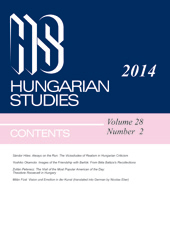ANCIENT DEATH MASKS AND THE PREHISTORY OF HUNGARIANS - LESSONS OF A MUSEUM EXHIBITION
ANCIENT DEATH MASKS AND THE PREHISTORY OF HUNGARIANS - LESSONS OF A MUSEUM EXHIBITION
Author(s): István FodorSubject(s): History, Archaeology, Fine Arts / Performing Arts, Customs / Folklore, Ancient World
Published by: Akadémiai Kiadó
Keywords: death masks; Hungarian early history; burial customs;
Summary/Abstract: From June to September 2013 I was organizing an exhibition entitled “Ancient Death Masks” in the Hungarian National Museum. The most important goal of the exhibition was to display for visitors an idea supported by scholarly research. According to this conclusion, silver and gold death masks observed in the graves of the 10th century Hungarians who settled in the Carpathian Basin originated from Magna Hungaria, the Uralian territory of the Hungarians. We displayed death masks found in three large regions of Eurasia: that of Tashtyk Culture in the Yenisei Valley (1st–5th cc.), 6th–11th century masks of the Ural Region, and 10th century masks from the Carpathian Basin (Fig. 1). Although the religious background of the masks in the three territories is similar, the forms of manifestation are different. From the shape of the masks we can clearly conclude that the 10th century Hungarians brought this burial custom from the Ural Region, Magna Hungaria. This can be cited among the few pieces of archaeological evidence (compeer to the historical evidence) attesting to the migration of the Hungarians from the east to the west.
- Issue Year: 28/2014
- Issue No: 1
- Page Range: 119-138
- Page Count: 20
- Language: English
- Content File-PDF

